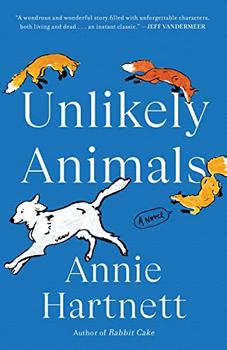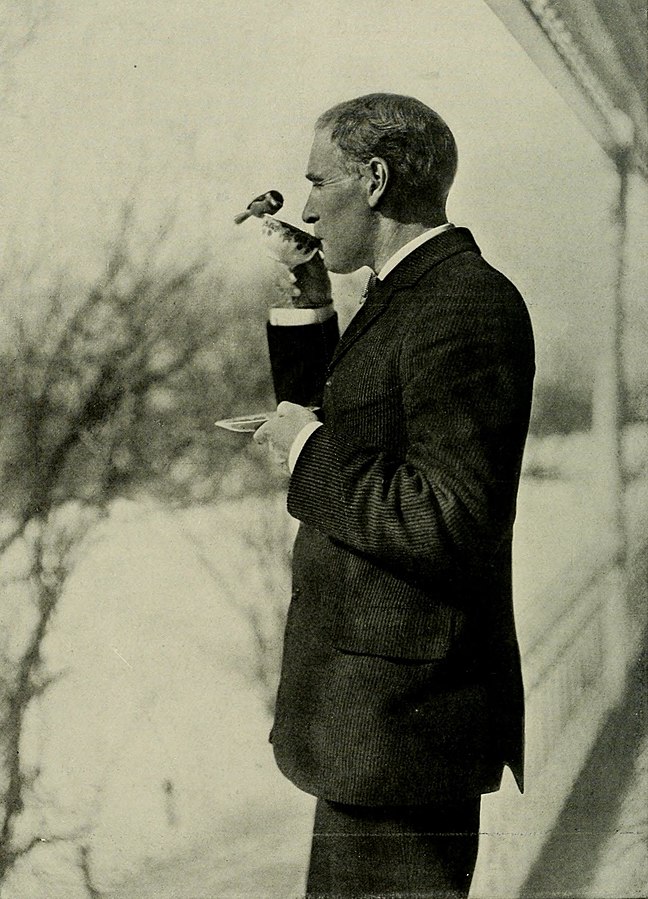Summary | Excerpt | Reviews | Beyond the Book | Read-Alikes | Genres & Themes | Author Bio

A Novel
by Annie HartnettThis article relates to Unlikely Animals
 In Unlikely Animals, Clive Starling pals around with a hallucination of Ernest Harold Baynes, a real-life figure sometimes called the American Dr. Dolittle. Through his deep reverence for animals, Baynes helped save bison in America, educated the public about songbirds and befriended all manner of creatures.
In Unlikely Animals, Clive Starling pals around with a hallucination of Ernest Harold Baynes, a real-life figure sometimes called the American Dr. Dolittle. Through his deep reverence for animals, Baynes helped save bison in America, educated the public about songbirds and befriended all manner of creatures.
Born in Calcutta in 1868 to British parents, Baynes moved to New York City at age 11. He excelled in school and athletics, but he found himself indecisive during college. He toyed with the idea of a legal career, and for a time worked with his father, an inventor and amateur photographer. Typhoid prevented Baynes from being drafted into the Spanish American War, so he spent that time learning and writing for the New York Times.
In 1901, Baynes married and settled down in Stoneham, Massachusetts, where he took to feeding injured and orphaned animals. In 1905, he published an article in Bird-Lore magazine about how to organize care and feeding for wildlife during harsh winters. His article detailed his own methods of mobilizing children, parents, teachers and local faith leaders to tend to vulnerable animals.
After Baynes's father died, he moved to Meriden, New Hampshire, and it was there that he became interested in bison. As the population of the animals dwindled to less than 1,000 in the U.S., there was renewed interest in caring for the 160 that lived on the preserve known as Corbin Park near Baynes's home. He became conservator, and began publishing impassioned pleas to spur others to help save the bison. He also hand-raised the young on the preserve, and could be seen riding through the grounds in a carriage pulled by two bison.
He raised any animal that let him, though he seems to have been quite partial to a red fox named Sprite, about which he wrote a book. The only failure he seems to have had was, unsurprisingly, a bear who could not be taught appropriate household manners and was therefore donated to the Bronx Zoo. When Teddy Roosevelt, a fellow wildlife aficianado who established the National Park System, visited Corbin Park in 1902, he was moved by Baynes's devotion to animals. When the naturalist sent plans he'd drafted to bring back the bison, Roosevelt formed the American Bison Society, and put Baynes in a leadership position. The bison population slowly began to recover.
The great naturalist also had an interest in birds, especially since many were being hunted for their plumage. In 1915 he published Wild Bird Guests: How to Entertain Them, a book that taught readers how to better interact with birds near their homes. The book also speaks out against the killing of birds for sport or feathers. Baynes's work led to the opening of one of the first bird sanctuaries in America, located in Meriden, NH.
Always creative at getting out the word, he commissioned poet Percy MacKaye, a member of the Cornish Art Colony, to write a play called Sanctuary: A Bird Masque in 1913. It was a thinly veiled propaganda piece about the importance of bird conservation. Baynes wrote a role for himself, and, in an inspired move, also wrote parts for the daughters of President Woodrow Wilson, who was visiting the area. Wilson was therefore sure to attend, and Baynes ensured that bird conservation stayed on the president's mind. In fact, the play went on to become a success and toured the nation. Photographs show actors in giant bird costumes — no doubt the wardrobing contributed to the play's success.
Baynes published 11 books, many of which are available online. He also wrote numerous articles and lectures on conservation. He shared stories of life with his own animals and those that he met in his travels, along with writings on the role of animals in wartime. Volunteers at the Plainfield Historical Society in New Hampshire have been working to digitize his archives, including his many photos.
Perhaps the most controversial aspect of his work was that he supported medical research done on animals and said so in his short book, Which Shall Live—Men or Animals? While such a position may seem out of character, Baynes's work is very well-researched and full of examples that are still relevant today. He cites the typhoid vaccine and tetanus shot as being possible through animal experiments, and also looks back at the animal experiments believed to have helped end the bubonic plague. In this work and others, Baynes doesn't advocate for animal cruelty, but he does express concern that the anti-vivisection movement could set back lifesaving research.
Baynes died in 1925, and his ashes were scattered on Mt. Croydon near his Meriden home. A dedication plaque reads: "Here were scattered the ashes of Ernest Harold Baynes, lover of animals and men, and loved of them. May 1, 1868, January 21, 1925."
Ernest Harold Baynes, courtesy of Wikimedia Commons
Filed under People, Eras & Events
![]() This "beyond the book article" relates to Unlikely Animals. It originally ran in May 2022 and has been updated for the
February 2023 paperback edition.
Go to magazine.
This "beyond the book article" relates to Unlikely Animals. It originally ran in May 2022 and has been updated for the
February 2023 paperback edition.
Go to magazine.






Your guide toexceptional books
BookBrowse seeks out and recommends the best in contemporary fiction and nonfiction—books that not only engage and entertain but also deepen our understanding of ourselves and the world around us.